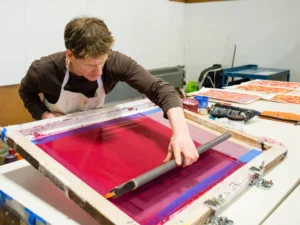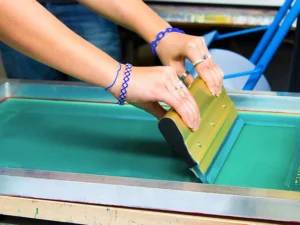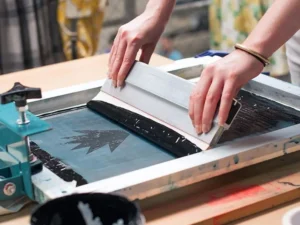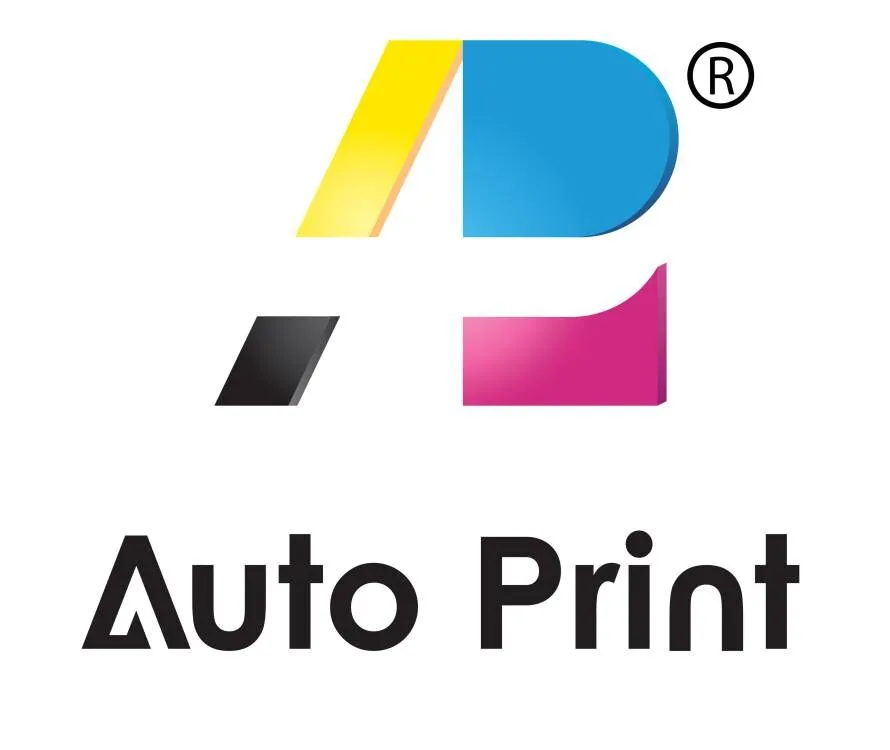Screen Printing Knowledge
Different Types Of Screen Printing Process
One of the most common and time-tested printing procedures is ‘Screen printing.’ Even on darker textiles, its ability to generate vibrant colors makes it the most popular technique for printing on fabric and paper.
What is Screen Printing?
Screen printing can be defined as the process of printing on a mesh screen. Screen printing is also known as serigraphy or silkscreen printing.
You will print a pattern using ink forced through a stenciled mesh screen. A screen printer uses a mesh screen, ink, and a squeegee to transfer a stenciled pattern to a flat surface.
Special inks allow screen printing to be applied to various surfaces than cloth and paper, such as wood, metal, plastic, and glass. Screen-printed designs might employ a single color of ink or various colors. If you’re working with objects that come in various colors, use separate stencils for each ink and apply the colors one at a time.
6 Types of Screen Printing Process
There are a few options for the screen printing process depending on your printing needs:

Spot Color Screen Printing
The Spot Color Screen Printing process utilizes spot colors derived from various color separations for screen printing. Spot colors may be printed in solid colors and shapes on a screen using a screen printer.
Spot Color Screen Printing Process
This is the first type of screen printing. First, ensure your artwork is polished and ready to print. To print effectively, you must also ensure that the design and any words or numbers, etc., are up to date and properly separated from the colors.
The final print on the product will not be as nice as you wish if the colors are not well separated and distinct or if the artwork’s resolution is too low.
As a result, it’s critical to look for clear color separation and excellent resolution for producing high-quality output.
Second, the design will be transferred to the product using a stencil-like tool. You can use a stencil to help the ink absorption by the product (apparel), resulting in vibrant, rich colors. Above is the spot color screen printing process.
Spot Color Screen Printing Benefits
- Spot Color Screen Printing is one of the most popular ways of screen printing. Prints in vibrant, raw colors on a wide range of textiles and garments.
- Allows complete control over the colors, producing crisp, clear, and well-ordered output.
- It’s easier to use since the colors aren’t mixed as in other screen printing techniques.
- This approach is an excellent choice for printing t-shirts, sweatshirts, and jackets.
Halftone Printing
The screen printing technique known as halftone printing emphasizes shade and small dots. In particular monochromatic prints containing just one color may be printed with this approach.
Halftone printing looks its finest when one of the printed ink colors is deeper and more prominent than the backdrop. The ink seems to be a different shade from a distance since the procedure only uses one color of ink and then halftones it.
On the other hand, the artwork clearly shows that the whole design is made up of only one hue. When printing colors in a precise pattern of dots rather than solid form, people see ‘illusions’ of numerous tints or shades when seeing something from a distance.
Halftone Screen Printing Process
The screen printer first creates the design. Remember – If the picture is defective, the screen printing dots will not be precise enough for the appropriate view if you use this procedure.
To put it another way, a picture with poor quality will look bad on the final print. Consequently, ensure your image’s resolution is high enough to get the most remarkable effects.
Furthermore, you will need a screen with a high mesh count. A critical step in this procedure is correctly placing the inked dots. It would be best not to push down on the inked dots with too much force, or they won’t print correctly. Above is the halftone screen printing process.
Halftone Printing Benefits
It’s inexpensive since just one kind of ink is needed.
This screen printing method differs from others because it uses only one hue to produce “seemingly” various shadings.
This is recommended for the creation of monochromatic artworks or shades of artwork.
Using microscopic dots of just one-color ink to give the appearance of many colors allows graphic artists and designers to experiment and apply their imagination.

Grayscale Printing
To produce a grayscale print, you must employ a range of grayscale values from 0 to 255. In screen printing, the colors are captured by either increasing or reflecting the amount of white light or decreasing or absorbing (instead of reflecting) the amount of black light reflection.
Grayscale Screen Printing Process
Despite the name, this is not a black-and-white method. Grayscale does not use real black and white to characterize pictures as in black and white. Instead, we use the RGB or CMY color schemes, but they are in varying shades of gray.
You may convert photos from black and white to grayscale after ensuring the design or image has high quality and a decent color rendition using RGB or CMY.
This screen printing method is based on pixels with a brightness level that may distinguish between shades of gray. Pixels may indicate their shade since they have a measured brightness.
Another way to put it is to state that gray tones fall in the middle of the brightness range, between (white). After the picture has been converted to grayscale, every shade in the image may be placed in this range based on the brightness of each pixel. Above is the grayscale screen printing process.
Grayscale Printing Benefits
- Images in light and dark gray are available at low costs.
- High-quality print results
CMYK Printing
CMYK printing has only four primary colors: cyan, magenta, yellow, and key (or black). This technique might work well if you’re seeking low-cost screen printing technologies that let you print in several colors.
CMYK Screen Printing Process
Combining the four colors with the black key plate is critical in this procedure. The key plate enables varied hues and contrasts to build the picture. Therefore this step is essential for adding better details and ensuring appropriate image viewing. Above is the CMYK printing process.
CMYK Printing Benefits
- It’s more suited to light-colored or white garments.
- In terms of quality, prints are on par with photos that use more than four colors.
- Streamline the ordering and design processes for screen printing.
Simulated Screen Printing Process
Printing using a Simulated Process is a common screen printing technique. Because it allows for color halftones in a design, it is ideal for picture prints.
Simulated Screen Printing Process
This screen printing procedure emphasizes the use of halftone ink colors to capture the colors of the original artwork. Both brighter and darker hues of material benefit from this technique, also known as the “sim process.”
Design and image may be kept independent. This process often helps students in their journey to master color theory. The picture may be as complex or as basic as needed.
Various color techniques enhance the visual impact, including spot colors combined with halftones and gradients. Because of this, there’s more room for a fun graphic or pattern on the garment. Above is the Simulated screen printing process.
Simulated Screen Printing Benefits
- The final printed picture is vivid, lifelike, and meticulously detailed.
- As a result of its usefulness for both darker and lighter shades, it is widely used.
Duotone Printing
Duotone printing is a screen printing technique in which the same picture is produced in two colors using a combination of two halftones.
This means that one halftone is printed in black ink, while the other is produced in a color ink such as warm brown or any other.
Duotone Screen Printing Process
To make a duotone print using the color hue of the warm brown halftone, use the warm brown halftone and black halftone. It resembles a sepia-toned image in appearance. Above is the Duotone screen printing process.
Duotone Printing Benefits
- Suitable for light textiles and clothing
- It gives the finished print a refined and artistic appearance.

Do You Wish to Start a Screen Printing Business?
Screen printing is a traditional method for creating unique artwork, and it’s been a popular option for large-scale orders for generations.
To choose the best screen printing process for your company, you must first learn all the different screen printing forms, compare them, and analyze your specific needs. The different screen printing process has different benefits. You should choose the screen printing process that suits you best.
Aside from that, proper color management software allows you to control price choices for various colors your clients may choose from. Once Tech can assist you in choosing different types of screen printing machines and tools needed.
ONCE TECH is the only name, you need to remember when it comes to screen printing machines. They provide a complete line of round printing equipment, including manual and automated cylindrical silk screen printing presses and multi-color automatic round silk screen machines that are both modern and easy to use.
Learn a wide variety of printing procedures and get your printing company lucrative. Analyze the procedures above and choose the most appropriate for your business.

